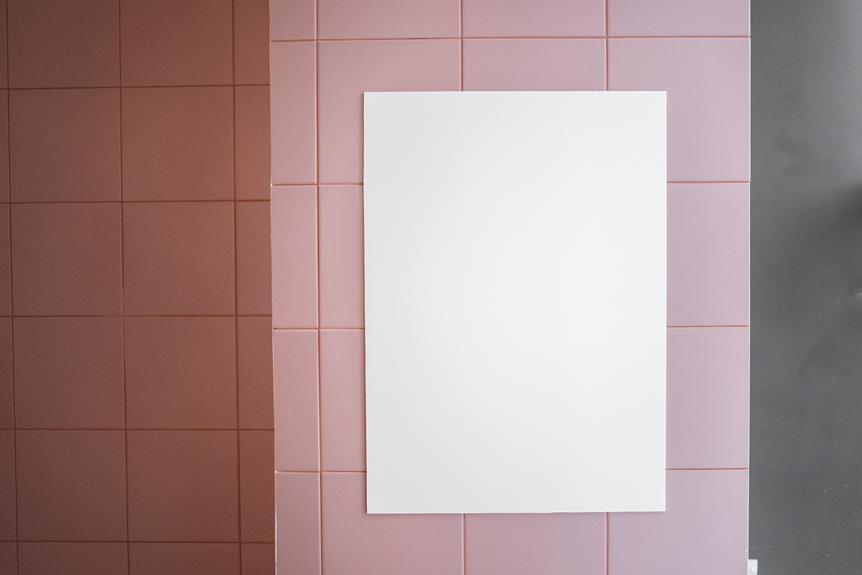You might think canvas is just for artists, but there's a whole world of practical uses for this durable material. If you're looking to master the ins and outs of canvas, here are 5 essential facts you need to know.
From its origins and composition to its versatility in modern applications, understanding canvas material can open up a world of possibilities.
We'll also cover care and maintenance tips, as well as its sustainability and environmental impact.
So, if you've ever wondered about the secrets of canvas, get ready to dive in and become a canvas connoisseur.
Key Takeaways
- Canvas material has a long history and was originally used for making sails and ropes.
- It evolved from being made of hemp or flax to being produced from cotton.
- Canvas material is versatile and used in a wide range of modern applications, such as fashion, accessories, home decor, and industrial uses.
- Care and maintenance of canvas material involve regular cleaning, avoiding harsh chemicals, and proper storage to prevent damage and mold growth.
Origins of Canvas Material
Originating in ancient times, canvas material has a fascinating history. The word 'canvas' itself has a rich history, coming from the Greek word 'cannabis,' due to the material's early use in making sails and ropes. The history of canvas dates back to at least the 13th century, where it was used for oil paintings. Its evolution into a sturdy and durable fabric suitable for a wide range of uses, from sails to clothing to artwork, is a testament to its enduring appeal.
Canvas has a fascinating history of evolution, transitioning from being made of hemp or flax to being produced from cotton, which made it more affordable and accessible to a wider population. Its durability and versatility led to its use in the manufacturing of tents, marquees, and backpacks. Over time, it became synonymous with strength and reliability, making it an ideal material for various industrial and artistic applications.
Understanding the history and evolution of canvas material provides insight into its enduring popularity and multitude of uses across different cultures and time periods.
Composition of Canvas Material
When choosing canvas material, you should consider the composition, as it can greatly affect its durability and suitability for various uses. The composition of canvas material refers to the type of fibers used and how they're woven together.
Here are some important points to keep in mind:
- Strength and Durability: The composition of canvas material plays a crucial role in determining its strength and durability. For instance, canvas made from 100% cotton tends to be softer and more breathable, but may not be as durable as blends or synthetic fibers.
- Different Weave Patterns: Canvas material can be woven in different patterns such as plain weave, duck weave, or twill weave. Each weave pattern offers unique characteristics in terms of strength, texture, and suitability for different applications.
- Fiber Blends: Canvas material can be composed of various fiber blends, such as cotton-polyester blends or cotton-linen blends. These blends aim to combine the strengths of different fibers to enhance the overall performance of the canvas material.
- Impact on Suitability: The composition of canvas material directly impacts its suitability for specific uses, such as painting, outdoor upholstery, or bag making. Understanding the composition can help you choose the right canvas for your intended purpose.
Versatility in Modern Applications
You'll find that canvas material offers a remarkable versatility in modern applications, making it a go-to choice for a wide range of uses.
In today's world, canvas has transcended its traditional role in art and has found its way into a variety of modern uses. From fashion and accessories to home decor and industrial applications, canvas has proven to be an adaptable and durable material. Its ability to withstand wear and tear makes it ideal for items like bags, shoes, and upholstery.
Furthermore, canvas's artistic potential extends beyond traditional painting surfaces. It has become a popular choice for printing photographs, creating wall art, and even serving as a medium for digital art. The texture and weave of canvas add depth and character to printed images, enhancing their visual appeal.
Its versatility in modern applications is a testament to its enduring relevance in today's creative and practical industries. Whether you're looking for a material with artistic potential or durability for everyday use, canvas is a versatile option that continues to stand the test of time.
Care and Maintenance Tips
Canvas material requires proper care and maintenance to ensure its longevity and optimal performance in various applications. To keep your canvas material in top condition, follow these care and maintenance tips:
- Regular Cleaning: Use a soft brush or vacuum to remove dirt and debris from the canvas. For stubborn stains, gently scrub with a mixture of mild soap and water, then rinse thoroughly and allow it to air dry.
- Avoid Harsh Chemicals: Refrain from using harsh chemicals or bleach, as they can damage the canvas material and affect its color and texture.
- Proper Storage: When not in use, store your canvas material in a cool, dry place away from direct sunlight to prevent fading and moisture damage. If possible, roll the canvas instead of folding to avoid creases.
- Mold Prevention: To prevent mold and mildew growth, ensure the canvas is completely dry before storing it. If storing for an extended period, consider using moisture-absorbing products such as silica gel packs.
Sustainability and Environmental Impact
Implementing sustainable practices in caring for your canvas material is essential for minimizing its environmental impact. By being mindful of sustainability practices and environmental regulations, you can contribute to reducing the carbon footprint associated with canvas production and maintenance. Here are some key sustainability practices to consider when it comes to your canvas material:
| Sustainability Practice | Description | Benefits |
|---|---|---|
| Use of Eco-friendly dyes | Opt for dyes that are non-toxic and biodegradable, minimizing water pollution and harm to ecosystems. | Reduced environmental impact and safer for workers. |
| Ethical sourcing of materials | Choose canvas made from sustainably sourced materials, promoting responsible land use and forest conservation. | Supports ethical supply chains and biodiversity conservation. |
| Recycling and upcycling | Explore ways to recycle or upcycle old canvas material, reducing waste and extending the material's lifespan. | Minimizes landfill waste and conserves resources. |
Frequently Asked Questions
What Are the Different Types of Canvas Materials Available and How Do They Differ in Terms of Durability and Performance?
When comparing canvas types for durability, consider factors such as weight, weave, and treatment. Heavyweight canvas is more durable but less flexible, while lightweight canvas offers better performance for certain applications.
Can Canvas Material Be Used for Outdoor Applications and Is It Resistant to Weather and Environmental Elements?
Yes, canvas material can be used for outdoor applications. It offers excellent outdoor durability and is resistant to weather and environmental elements. This makes it a great choice for various outdoor uses.
Are There Any Specific Cleaning Products or Methods That Should Be Used to Maintain the Quality and Appearance of Canvas Material?
To maintain canvas material, use specialized cleaners and gentle methods like spot cleaning with mild soap and water. Avoid harsh chemicals or abrasive scrubbing. Regularly dust or vacuum to prevent dirt buildup and extend its lifespan.
How Does Canvas Material Compare to Other Popular Textile Materials in Terms of Cost and Longevity?
When comparing canvas material to other textiles, you'll find that it offers a great balance of cost and longevity. It's durable and relatively affordable, making it a popular choice for various applications.
What Are Some Innovative or Unconventional Uses of Canvas Material in Modern Design and Manufacturing?
In modern manufacturing, canvas material is being used in innovative applications and unconventional designs. From durable outdoor gear to stylish home decor, creative uses of canvas are pushing the boundaries of traditional textile materials.
- Tetron Fabric for Marine Applications: Durability and Use Cases - June 18, 2025
- Tetron Fabric for Outdoor Furniture: Weather Resistance and Care - June 18, 2025
- Tetron Fabric for Wall Coverings: Style and Application Tips - June 18, 2025




